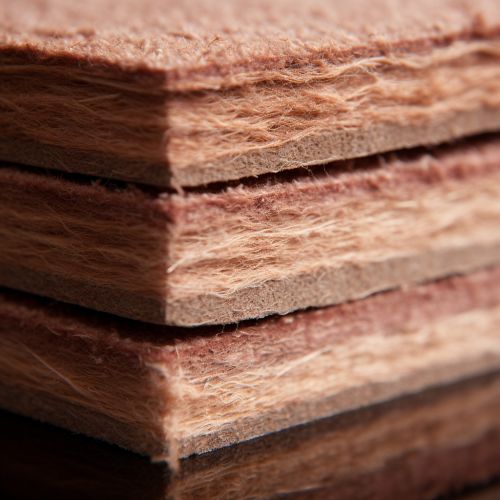R-value (insulation)
Introduction
The R-value is a measure of thermal resistance used in the building and construction industry. Under uniform conditions, it provides a measure of the resistance to heat flow. The higher the R-value, the greater the insulating effectiveness. The R-value is the reciprocal of the U-value, a measure of heat transfer through a structure (the lower the U-value, the greater the structure's resistance to heat transfer).
Understanding R-Value
The R-value is a measure of how well a barrier, such as a layer of insulation, a window, or a complete wall or ceiling, resists the conductive flow of heat. R-value is expressed in units of square feet times degrees Fahrenheit times hours, divided by British thermal units (ft²·°F·hr/Btu). In metric units, R-value is expressed in square meters times degrees Celsius divided by watts (m²·°C/W).
The R-value depends on the type of insulation, its thickness, and its density. The R-value of a multi-layered element is the sum of the R-values of its layers. Thermal resistances for surfaces and air spaces are also used in the calculation of a unit's overall R-value.
Factors Affecting R-Value
Several factors can affect the R-value of a material. These include:
Temperature
The R-value of some materials decreases as the temperature decreases. For example, at cold temperatures, the R-value of loose-fill fiberglass decreases because the air within the material convects heat.
Moisture
If moisture is present, it can significantly reduce the R-value of insulation. When insulation gets wet, it loses its ability to resist heat flow (its R-value decreases).
Aging
Some insulating materials, such as polyurethane and phenolic foam, can shrink and pull away from their surrounding materials. This can create air spaces, which can reduce the overall R-value of the system.
Types of Insulation and Their R-Values
There are many types of insulation available, each with its own set of characteristics. The R-value per inch of the different types of insulation varies. For example:
Fiberglass
Fiberglass is a type of insulation that is made from fine strands of glass. It has an R-value of approximately 2.9 to 3.8 per inch.
Mineral Wool
Mineral wool is a type of insulation made from rock, slag, or other mineral sources. It has an R-value of approximately 3.1 to 3.4 per inch.
Cellulose
Cellulose insulation is made from recycled paper. It has an R-value of approximately 3.2 to 3.8 per inch.
Polyurethane and Polyisocyanurate
Polyurethane and polyisocyanurate are types of foam insulation. They have an R-value of approximately 5.6 to 8.0 per inch.
Expanded Polystyrene (EPS)
Expanded polystyrene (EPS) is a type of foam insulation that is made from polystyrene. It has an R-value of approximately 3.6 to 4.2 per inch.
Extruded Polystyrene (XPS)
Extruded polystyrene (XPS) is another type of foam insulation made from polystyrene. It has an R-value of approximately 4.5 to 5.0 per inch.
Calculating R-Value
The R-value of a structure can be calculated by adding up the R-values of its individual layers. For example, if a wall is made up of a layer of drywall (R-0.45), a layer of fiberglass insulation (R-13), and a layer of plywood (R-0.62), the total R-value of the wall would be R-14.07.
Importance of R-Value in Building Design
The R-value is an important factor in building design. It is used to determine the amount of insulation needed to provide an effective barrier against heat loss or gain. The higher the R-value of a material, the greater its insulating properties and the slower the heat flow through it.
In colder climates, a higher R-value is desirable to keep heat in, while in warmer climates, a higher R-value is beneficial to keep heat out. Building codes often specify minimum R-values for different parts of a building, such as the walls, roof, and floor.
Misconceptions About R-Value
There are several misconceptions about R-value that can lead to misunderstandings. One common misconception is that the R-value of a material is the only factor to consider when choosing insulation. While the R-value is an important factor, other factors such as the permeability to water vapor, the fire resistance, and the environmental impact of the insulation should also be considered.
Another misconception is that doubling the R-value of a material will cut heat loss in half. While it is true that doubling the R-value will decrease heat loss, the relationship is not linear. The benefit of adding insulation decreases as the R-value increases.
Conclusion
The R-value is a critical factor in the design and construction of energy-efficient buildings. It provides a measure of a material's resistance to heat flow, with higher values indicating better insulating properties. However, it is important to consider other factors such as moisture resistance and environmental impact when choosing insulation materials.


